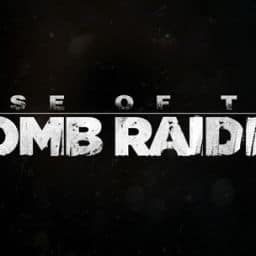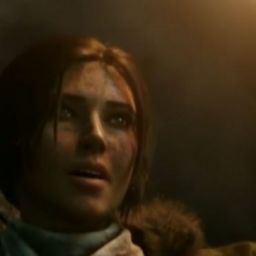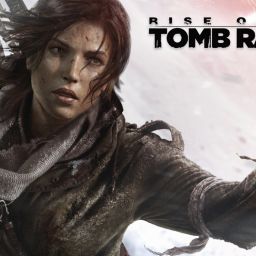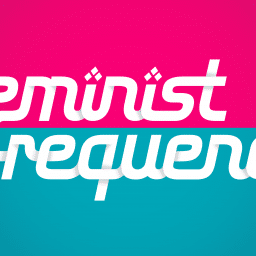When we last left Lara, she was being swept away by an avalanche. As this will tend to do, she loses consciousness, and we’re sent into a flashback to, the game tells us, two weeks earlier.
A tape recording, the voice the same as the one which began narrating the game. I assume this is Lara’s father. He’s talking about the afterlife, and how the greatest tragedy of life is that we’re “too soon taken from it.” The game shows me a manila folder marked “Reincarnation Research: Afterlife.” Next to it, a drawing of Himiko, then another of Anubis. I’m looking at these things from a first-person perspective, using a flashlight.
The wall from the game’s menu screen, only its images are clearer. In addition to maps and text, an image of the Holy Grail, a knight in a waterfall taken with a Polaroid camera. Joan of Arc. Rasputin. Some occult symbols on a piece of paper marked “Druids!” Christ and the Arc of the Covenant. A drawing of four stone pillars. A drawing of the Crusades with a red circle and the word “Trinity?” and a post-it reading “Important!” They are, Croft narrates, “An ancient sect with designs on controlling the future of humanity. I must proceed carefully for the sake of my family. If anything were to ever happen to Lara or Anna… I could never forgive myself.” (A little clichéd, there, Croft.)
The sound of a key in the door. I am apparently not Lara, since she’s the one who walks through it. She goes over to the open window and shuts it. I’m back watching her now, the player instead of the interloper in her room, although one of the tape recorders was still on, and she knows “I” was there. Someone comes to the door—it’s a woman named Ana.
She hands Lara a tabloid that reads, “Another Crazy Croft?” with a picture of Lara and a smaller inset of a be-spectacled man who must be her father. Lara asks Ana if she was followed—she clearly thinks Lara is insane, and the longer Lara goes on about a mythical Prophet’s Tomb, the more Ana insists that she is as obsessed as her father, that “it’s all fairy tales. Nonsense. Don’t go down this road. You know where it leads.” Lara says “I’m going to find the Prophet’s Tomb,” and we’re in the desert, Lara sitting in the passenger seat of a Jeep. “There’s nothing out here,” the driver insists, and she tells him to keep driving.
A helicopter swoops over, and the driver calls them “just local militia,” and Lara immediately recognizes that he’s sold her out. He admits, “They paid better than you,” and the helicopter opens fire. He wasn’t expecting that, naturally, but then he’s dead and the Jeep crashes. Lara crawls out of the wreck, slides down the mountainside, ending up on the northwest border of Syria, which is clearly a war zone.
Okay. So that’s rather politically apropos. I wasn’t actually expecting the flashback to include gameplay, but here we are, overlooking a Syrian city with intermittent explosions going off—airstrikes? suicide bombs? shelling?—in its streets. I’m reminded of Beirut. Of Paris. Both events that hadn’t happened yet when the game hit the shelves a little more than a week ago, but which were spawned by the same war being reflected back at me now.
And people say it’s “just a game.”
On the Northern border of Syria, Lara is standing on the edge of a cliff, and, beside her, there’s an eagle pecking at something on a stone. I’m reminded of Prometheus, chained to a rock for bringing fire—knowledge, heat, light—to humankind, his kidneys and liver pecked out every day by an immortal eagle. I have the feeling that’s not an accidental eagle. Especially since, as Lara moves past the rock, she stumbles, falls, and leaves behind a bloody smear where the eagle was sitting.
The question is whether or not Lara is our Prometheus, a modern-day archaeologist Pandora who’s about to let something horrible out of a very old box. If so, should I continue? Keep going and unleash all the horrors the world knows. Stop, and never play the game. I guess there’s something to the value of the journey, right? Keep going because if you don’t risk letting the monsters out you never get to live. Never have hope.
That’s something we need these days, hope, rather than fear. Or, rather, hope in addition to fear, because this is a world—this world overlooking the explosions in Syria on the screen, there and in other parts of the world in reality—that desperately needs a little bit of hope to temper the horror.
I wasn’t expecting Rise of the Tomb Raider to make me wax so philosophical, but this game has gotten to me and I’m really only about twenty minutes in. It’s worth the sticker price just for that. Five stars. And a cherry on top. If you actually stop to look out at the landscape here, seemingly barren but with a whole city spread out in front of you, it hits you like a punch to the gut—this game isn’t just a game. This game knows that it wants to say something about the impossible world we live in, about the dangers of religious extremism (whether the Crusader on Lara’s wall or a terrorist dedicated to ISIS) and ideological certainty that has no regard for the sanctity of human life, whether their icon is a crescent moon or a cross or a six-pointed star.
And right now I have a lot of respect for the team who created this game—the writers, designers, artists, programmers, all of them. And Crystal Dynamics for letting them do it. This game has already said more than most AAA titles, and—as I said—it’s only twenty minutes in.
But this series is about gameplay—I’ll write up a book chapter (or two, or ten) some other time about terrorism and global warfare and Pandora’s box of Promethean horrors.
At the top of the cliff there’s water—water from the rock. On a ledge outside is a gilded cross (“It looks Byzantine”). Inside a cave, a marking pillar with an inscription, including the word “Prophet.” (The pillar, by the way, looks like those drawn on the wall in Lara’s office.) On the wall in the tomb, another inscription I can read if Lara gets close—the Prophet of Constantinople, “unjustly murdered by order of Trinity.” A Byzantine mural on the wall with a haloed figure performing “healing miracles.” Another in which the same figure is leading his followers—and has a sheep (Lamb of God, anyone?). The Prophet convincing an army to cease war.
A voice interrupts, saying that Lara could not have survived the crash, that someone named Konstantin (really? Obvious evil mooks are obvious) wants to breach the tomb before sundown.
There’s a secret entrance, too, with crumbling bricks. On the other side—the oasis. Lara says, “It’s amazing. If only dad could have seen this.”
I head toward the temple, and the helicopter flies over. Hopefully I find a weapon sooner rather than later. And more wacked out jumping puzzles. Crystal Dynamics really likes to make you jump now by rather suddenly removing the thing you’re jumping from. It’s getting a little old… maybe sometimes just let me jump on solid things? It’d be a nice change of pace. And maybe stop dropping large rocks and ice on my head. That’d be refreshing, too. (I’m not really complaining, but sometimes a straight-forward jump wouldn’t go amiss…)
As I head inside, another Richard Croft recording begins to play, discussing how Trinity pursued the Prophet “relentlessly, until finally confronting them in the hidden oasis.” Looks like we’re about to repeat that. Maybe Lara’s the Prophet. Or maybe her father is. Prophet, Pandora, Prometheus. Everybody gets in trouble for curiosity. Including the cat.
As an academic, I have to say, that myth has always annoyed me. I’m more a fan of the burn-it-down school of philosophy—so I guess that makes me Promethean. Me, and Milton’s Satan. (And Shelley… Both Percy and Mary.)
And now some of Tomb Raider‘s hallmark creepy tunnels. Spiderwebs and dust this time, instead of goo and water. A good change, I think. There are, however, scorpions, about which Lara seems to have zero concerns, which I find rather concerning, given that those are poisonous and will kill her. But the designers have littered them around like spiders. Not at all the same kind of thing, guys.
Kick through a wall, and—there it is. Lara notes that “There was a battle here. Armed soldiers against religious pilgrims.” The militant against the innocent, zealots versus ordinary believers… This game is about a different kind (un)holy war than the one in front of Lara. Or maybe, really, it’s the same war, drawn out over centuries and across continents because people are incapable of allowing someone else to believe in something they haven’t approved. We are a world of people trying constantly to police one another’s minds, sometimes for good, sometimes for ill, sometimes for no other reason than we childishly want everyone to always agree with us. Whoever “us” actually is.
There is a scroll here from a bishop, stating that the Prophet may yet live, despite the fact that “You swore that he was dead” (whoever “you” is). The figure seems Christ-like in that he has (maybe) been resurrected, yet Mohammedan in that he is a Middle-eastern Prophet. Certainly, there are no shortage of dying gods in global mythology—Attis, Adonis, Osiris, Christ, Mithras, even Zeus cut his way out of Saturn’s belly. Add the undying, and the list gets longer… including Prometheus.
A mural of the Prophet being slain. Some alms. A piece of ceiling that almost kills Lara—-and it turns out she’s had a gun the whole time, but now I can access it. Okay. Shoot the ceiling piece and proceed.
Trinity are apparently “blasting their way in,” which leads the floor to give way and Lara to fall… into water and goo. Apparently my dry tunnel earlier was just a tease. This is a true wet and gooey Tomb Raider tunnel. The water is even vaguely green with floaty bits in it. Well, okay, it’s not actually a tunnel, it’s a puzzle, but it’s still wet and gross. (And in this game I can swim under water—cool.) Also, once I get out of there, I immediately have to go into another tunnel (this one is really a tunnel) that is also wet and gross, so I’m right either way.
And… THAT was exciting. A little. Let’s add “traps” and “holding my breath” to the list of things that can now come out of nowhere, which already includes “rocks,” “ceiling bits,” “ice,” and “helicopters.” Oh, and “spikes from the ceiling” and “pits with stakes.” Those are fun, too.
And after crawling out of THAT, Lara adjusts her ponytail. I’m not sure if I think that’s really amusing or really weird. I mean, sure, my ponytail would totally be messed up by what just happened, but I’m not sure that I personally would stop to adjust it at that point. But I’m not actually Lara Croft, so maybe she would.
Ooooh, shiny! And by “shiny” I mean I’ve just walked into a tomb with a golden dome (“Stunning. We made it, Dad,” says Lara).
So the “thing” of this level is breaking open walls and opening gates to flood things. Lara keeps doing this, although I’m really not sure it’s the best idea… either for survival or archaeological preservation. At least this game I have glowsticks instead of torches, so the water doesn’t put them out. There are more alms caches here, a simple wooden cross, a secrets map, another letter—this one back to the bishop (saying that it can’t be the Prophet because he killed the Prophet himself—unsigned), another letter saying the knight is nearly to the temple (where he plans to kill the Prophet’s followers), and a final letter from the knight saying that the false Prophet looks an awful lot like the other Prophet, but that he would kill them all anyway.
At the actual tomb—medieval-style Crusader sarcophagus with full-body effigy and mosaic Byzantine tile—Lara pushes open the lid… “And… it’s empty.” Which I am not surprised by (what with the whole resurrection theme), but Lara most definitely is.
Just at this moment, Trinity commandos drop their climbing ropes into the tomb. They are definitely planning to blow the whole thing up, along with “the artifact” inside it.
I guess Trinity is big into tattooing things on its followers’ faces. Also the creepy leader seems to have stigmata… which I’m betting are deliberately inflicted as part of some weird, screwed-up holier-than-thou ritual. Konstantin orders them to open up the tomb, which of course Lara has hidden inside.
During the somewhat clichéd confrontation between Lara (“You’re a smart lady…”) and Konstantin, in which she insists that the tomb was empty and he doesn’t believe her, Lara steals the trigger for the explosives, which I didn’t see coming (although I did totally see him pulling a knife on her), and she blows up the temple.
Cue lots of running and jumping and a little shooting of Trinity bad guys (I really do miss the bow) as she escapes. Outside, she notices a symbol cut into the stone: “What’s this?” Clearly, this search isn’t over.
Flash forward (still in the flashback, mind you) to Croft Manor in England, Lara sitting on the floor in the dark working on a laptop. Footsteps, then Jonah comes in and turns on the light. He asks about the tomb and she explains.
Lara says that they were looking for “The Divine Source,” “the secret to immortality,” and the symbol she saw outside the oasis leads to “the lost city of Kitezh” (pronounced “Keh-tesh”), somewhere in Siberia, sunk beneath a lake. They argue about whether or not Lara should go, and Jonah points out that Richard Croft gave up everything chasing this artifact, “including you [Lara].” He tells her that “if you stayed still for five minutes, maybe you would see that.” He storms out, and when a shadow returns to the room, it isn’t Jonah—Lara is attacked, and Jonah returns just in time to save her, although the thief (Trinity) takes her father’s book. She says, “I led them to it, Jonah. If the Divine Source is real, we’ve got to find it first.”
Needless to say, this is why Lara and Jonah are in Siberia.







[…] agreed to allow me to change my proposed book chapter on Tomb Raider (2013) to one on Rise—this As-I-Play post on TLF explains what it was about the game that made me say “I have to write about […]